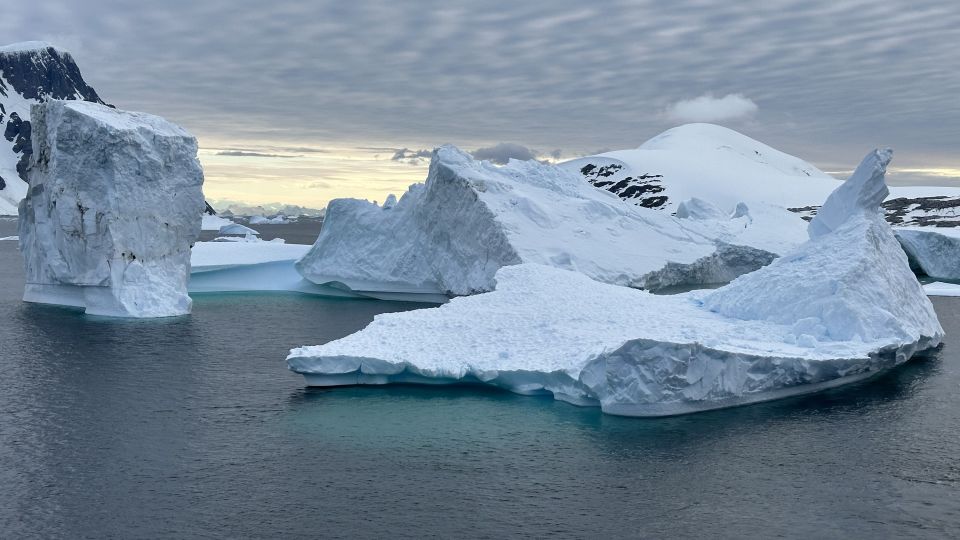During a summer afternoon in Antarctica, the Seabourn Pursuit cruise ship made headlines after it made contact with a sheet of sea ice in Hanusse Bay, embedding itself several hundred yards into the frozen ocean. However, instead of creating a panic reminiscent of historical maritime disasters, the 250 passengers aboard found their excitement in the event. They wandered onto the ice to enjoy the unique experience of their Antarctic adventure, complete with champagne provided for a celebratory toast. Among them were Greg and Susana McCurdy, who were thrilled to embark on a journey that marked a significant milestone in their travels; posing next to a banner proclaiming their arrival on the “7th Continent.” This interaction embodies a growing trend for travelers seeking authentic experiences, particularly post-Covid, as more tourists prioritize checking off bucket-list destinations, which increasingly includes Antarctica.
The increase in tourism to Antarctica is part of a broader trend, evidencing growing eagerness to visit the once-remote natural wonder. The International Association of Antarctica Tour Operators (IAATO) has been tracking visitor numbers since the early 1990s, revealing that about 7,000 tourists visited the continent annually at that time. In stark contrast, recent statistics show that the number has skyrocketed, reaching over 122,000 visitors this year alone. This surge can be attributed to the evolution of travel offerings in the region, which have transformed dramatically from the rudimentary accommodations available decades ago to the luxurious experiences now on offer. Modern cruise lines provide travelers with upscale amenities, vastly enhancing the appeal of polar expeditions.
The luxury accommodations and elaborate itineraries provided by contemporary cruise lines, such as Seabourn, Lindblad, and National Geographic, have contributed significantly to the increase in Antarctic tourism. Prior to these changes, voyages to Antarctica often involved smaller ships with minimal comforts, featuring shared facilities and limited dining options. In contrast, current offerings include ships equipped with exquisite restaurants, onboard spas, and private balconies in every cabin, thereby attracting a broader range of travelers eager for exclusive experiences. While companies like Quark focus on adventure tourism, providing activities like camping and skiing, the luxury segment continues to expand, drawing both adventure seekers and more traditional tourists.
However, experts have raised concerns regarding the environmental repercussions of the growing number of visitors to Antarctica. A study in the journal Nature indicated that increased human activity, particularly from cruise ships, has the potential to accelerate snowmelt due to pollutants such as black soot emitted by cruise ship engines, which darkens the snow and promotes earlier melting. Furthermore, the rising carbon dioxide levels, resulting from an influx of tour operators and visitors, are troubling researchers investigating the ecological balance of this fragile ecosystem. Awareness within the industry has led companies to implement guidelines to minimize their footprint, such as educating passengers about avoiding the introduction of contaminants and maintaining safe distances from wildlife.
Efforts to mitigate environmental impacts are supported by the Antarctic Treaty, which prohibits the construction of permanent structures within the region, ensuring that tourism does not drastically alter its pristine nature. As tourism organizations like IAATO take steps to monitor fuel consumption and optimize cruise ship operations, some cruise lines have initiated projects utilizing electric propulsion to curtail emissions. Meanwhile, the substantial investment in luxury expedition ships demonstrates a commitment to achieving a balance between providing top-tier experiences and maintaining ecological integrity.
The emergence of a “cruise only” category also reflects the evolving landscape of Antarctic travel. Lines such as Celebrity, Norwegian, and Princess have made it possible for travelers to view Antarctica without disembarking, offering a more budget-friendly alternative for those unable or unwilling to venture onto the fragile land. This segment has seen remarkable growth, with cruise-only passengers increasing from approximately 7,000 in 2017 to over 43,000 in the most recent season. Although these guests may miss pairings with penguins and seals typical of landing experiences, they can still appreciate the splendor of Antarctic wildlife from their vessels. This trend indicates that interest in Antarctic travel remains robust, with visitors eager to embrace the natural beauty of one of the world’s final frontiers, resulting in a unique tourism landscape characterized by both luxury and eco-consciousness.

